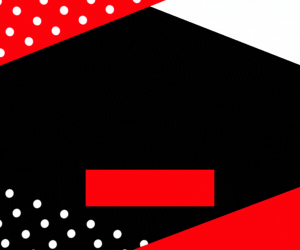Call centers are essential for businesses that want to provide exceptional customer service and support. However, maintaining a high level of productivity in a call center can be challenging. A productive call center not only ensures customer satisfaction but also maximizes efficiency, reduces operational costs, and drives business growth. In this extended guide, we’ll explore the strategies you need to analyze and improve your call center productivity.
1. Assess Current Performance Metrics
Before making any improvements, it’s crucial to assess your current performance metrics to understand where your call center stands. Start by tracking these key performance indicators (KPIs):
- Average Handling Time (AHT): This measures the average time an agent spends on a call, including talk time and after-call work. Keeping AHT low without sacrificing quality is critical.
- First Call Resolution (FCR): FCR refers to the percentage of calls where the customer’s issue is resolved on the first contact. A higher FCR means fewer repeat calls and greater customer satisfaction.
- Abandonment Rate: This metric tracks how many calls are abandoned by customers before they are connected to an agent. A high abandonment rate signals inefficiency or long wait times.
- Customer Satisfaction (CSAT) Score: This directly reflects how satisfied customers are with the service they received. It’s often measured through post-call surveys.
Analyzing these KPIs will provide a baseline of your current performance and highlight areas where improvements can be made.
2. Leverage Technology for Efficiency
One of the best ways to improve call center productivity is by leveraging technology. Modern call center solutions offer a range of tools to streamline operations:
- Automatic Call Distribution (ACD): This system intelligently routes incoming calls to the most appropriate agents based on availability and expertise. This reduces wait times and increases the likelihood of first-call resolutions.
- Interactive Voice Response (IVR): IVR systems allow customers to self-serve, handling common queries and routing more complex calls to agents. This reduces the workload on your agents and ensures that customers with complex issues reach the right person quickly.
- Call Recording and Analytics: Recording calls and analyzing them helps in quality control and identifying areas for agent improvement. With voice analytics, you can track customer sentiment, common issues, and compliance with scripts.
- AI-Powered Chatbots: While not a replacement for human agents, chatbots can handle routine tasks like FAQs or booking appointments, reducing the volume of calls to your team.
Investing in these technologies ensures your call center runs more efficiently, ultimately improving productivity and customer satisfaction.
3. Optimize Agent Training and Development
Your agents are the backbone of your call center, and their performance is directly linked to your overall productivity. Optimizing agent training and development is key to keeping them performing at their best.
- Comprehensive Onboarding: New agents should undergo thorough training that covers product knowledge, customer service protocols, and technical skills related to your call center software. Clear and structured onboarding reduces the learning curve, allowing new hires to become productive faster.
- Ongoing Training: Regular training sessions keep agents updated on new products, services, and customer service strategies. Consider implementing workshops, e-learning modules, and role-playing scenarios to keep skills sharp.
- Performance Feedback: Provide continuous feedback to your agents by reviewing call recordings, performance metrics, and customer feedback. Constructive criticism and regular coaching sessions help agents address their weaknesses and improve their performance.
4. Improve Workflow with Call Scheduling and Staffing
Effective scheduling and staffing play a vital role in boosting call center productivity. Overstaffing leads to idle agents, while understaffing leads to longer wait times and increased agent stress. Here’s how to optimize your workflow:
- Workforce Management Software: Use workforce management tools to forecast call volumes and schedule the right number of agents to handle the workload. These systems analyze historical data to predict peak times and adjust staffing accordingly.
- Flexible Scheduling: Offering flexible scheduling options can boost agent morale, reduce burnout, and ensure optimal coverage. Allowing agents to trade shifts or work remotely can lead to a happier and more productive team.
- Real-Time Monitoring: Use real-time monitoring tools to track agent availability and make staffing adjustments as needed. If you notice long wait times or an increase in call volume, you can reallocate agents to meet demand.
5. Foster a Positive Work Environment
A motivated and engaged team is crucial for maintaining high productivity. Fostering a positive work environment boosts employee morale, reduces turnover, and leads to better overall performance. Here are some strategies to achieve this:
- Recognize and Reward Performance: Implement an employee recognition program that celebrates high performers. Offering incentives such as bonuses, awards, or public recognition can motivate agents to improve their performance.
- Encourage Collaboration: Promote a culture of teamwork by encouraging agents to share knowledge and support each other. Regular team meetings and collaboration tools can foster a sense of unity and shared responsibility.
- Promote Work-Life Balance: Burnout is a common issue in call centers, and it can significantly reduce productivity. Offering flexible schedules, remote work options, and encouraging regular breaks can help maintain a healthy work-life balance for your agents.
6. Reduce Call Handling Time
While maintaining high-quality service is essential, reducing call handling time is another effective way to boost productivity. Here’s how to lower AHT without compromising customer satisfaction:
- Effective Call Scripts: Provide agents with concise yet flexible scripts that guide them through the call. Scripts should include solutions for common queries while allowing for personalization.
- CRM Integration: Integrating your customer relationship management (CRM) system with your call center software gives agents immediate access to customer data. This saves time by reducing the need to ask customers for repeat information.
- Pre-Call Preparation: Encourage agents to take a few seconds before each call to review customer history, ensuring they are prepared to address the customer’s issue promptly.
By refining call-handling techniques, you can significantly improve both efficiency and customer experience.
7. Monitor and Analyze Call Center Data
The more data you have on your call center operations, the better equipped you are to make informed decisions. Regularly monitoring and analyzing your call center data helps identify trends, performance gaps, and areas that need improvement.
- Real-Time Dashboards: Implement real-time dashboards that provide insights into KPIs like wait times, agent performance, and call volumes. These dashboards allow managers to react quickly to changes in performance or call flow.
- Call Quality Monitoring: Regularly review recorded calls to evaluate agent performance, customer satisfaction, and adherence to scripts. Identify patterns in customer feedback and use this information to inform training and process improvements.
- Customer Feedback Surveys: Collect customer feedback through post-call surveys or follow-up emails to gauge satisfaction levels. Use this data to identify strengths and weaknesses in your service and make necessary adjustments.
8. Implement Performance-Based Incentives
Introducing performance-based incentives can encourage agents to improve productivity. Metrics such as FCR, customer satisfaction, and call resolution time can be linked to bonuses or other rewards.
- Gamification: Incorporating elements of gamification, such as leaderboards or point systems, adds a competitive yet fun layer to daily tasks. Rewarding top performers on a weekly or monthly basis motivates agents to maintain high productivity levels.
- Performance Reviews: Conduct regular performance reviews where agents can see how they’re performing against goals. Recognizing improvements and areas for growth fosters a culture of continuous development.
Conclusion
Improving call center productivity is a continuous process that requires the right balance of technology, workforce management, training, and data analysis. By focusing on optimizing agent performance, leveraging the best tools, and fostering a positive work environment, your call center can become more efficient, handle higher call volumes, and offer exceptional customer service.
Start by analyzing current performance metrics, implement necessary technologies, and create a supportive environment for your agents. With the right strategies in place, your call center will not only meet but exceed its productivity goals.
Ready to enhance your call center’s productivity? Start optimizing your operations today with expert solutions tailored to your needs. Contact us now for a free consultation!











